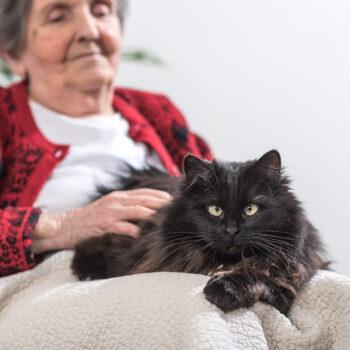This is a guest post written by Colleen Parker and Danielle Emery of Urban Resource Institute People and Animals Living Safely (URI PALS). Read part two of this two-part series.
As with any change you’re trying to implement at your animal welfare organization, culture starts with policy and is rooted in the people you surround yourself with. A good place to start is to revisit your organization’s policies and procedures—that’s where the culture of a program starts. Make sure an understanding of trauma and safety is woven into all of your practices from the ground up. Think critically about whether any of your existing rules may be rooted in unconscious biases and consider the idea that some policies may have a greater effect on some groups than others. For example, rules that state potential dog adopters must have a fenced-in yard are well-intentioned on behalf of dogs, but the result is that low-income families have less access to pet companionship than families from wealthier backgrounds. This has an outsized impact on Black, brown, and Indigenous communities, disabled folks; and the LGBTQIA+ community.
Let people see themselves in your organization
Communities are more likely to feel safe trusting you as a service provider if they can easily see themselves reflected in your organization. While this may sound like a diversity, equity, and inclusion issue, we would argue that DEI is key in creating a culture of safety (CARE is a great organization dedicated to promoting DEI in animal welfare)! When hiring and promoting staff, try to recruit folks who are part of the communities that you are working to support. Consider what requirements you currently have for hiring, and how you can modify those requirements to lower barriers for your community to become more involved in animal welfare. Similarly, consider your volunteer requirements. How can you make volunteering with your organization more accessible to your community? Weaving safe and equitable cultural practices into your foundational policies and making these commitments at every level of your organization will result in your work being as trauma informed as possible.
Cultivate a culture of unconditional positive regard for the community you are a part of and serve
We must be able to see people not only as pet parents, but as complex individuals who are experts in their own experience. Even when a person makes a decision that we might not agree with, they are still entitled to our respect. If we can receive folks with acceptance, respect, curiosity, and flexibility, they will hopefully see us as a safe place to turn when they need our support.
Cultivate relationships with social services
Cultivating these relationships is key. Start by finding your common ground. It’s easier than it sounds—both social services and animal welfare providers want to help their clients and communities be well and thrive!
Before you connect, make an effort to learn about your local community and the social support needs that exist. Reach out to your local social service providers and, instead of starting out by trying to convince them to include pets in their services as a new flagship initiative, ask if there are things about their work that they think it’s important for you to know. Try to discuss pets and animal welfare within the greater context of housing, social support, and equitability.
Come prepared with clear goals as well as flexibility, humility, and actions you are prepared to support them as they consider this issue.

